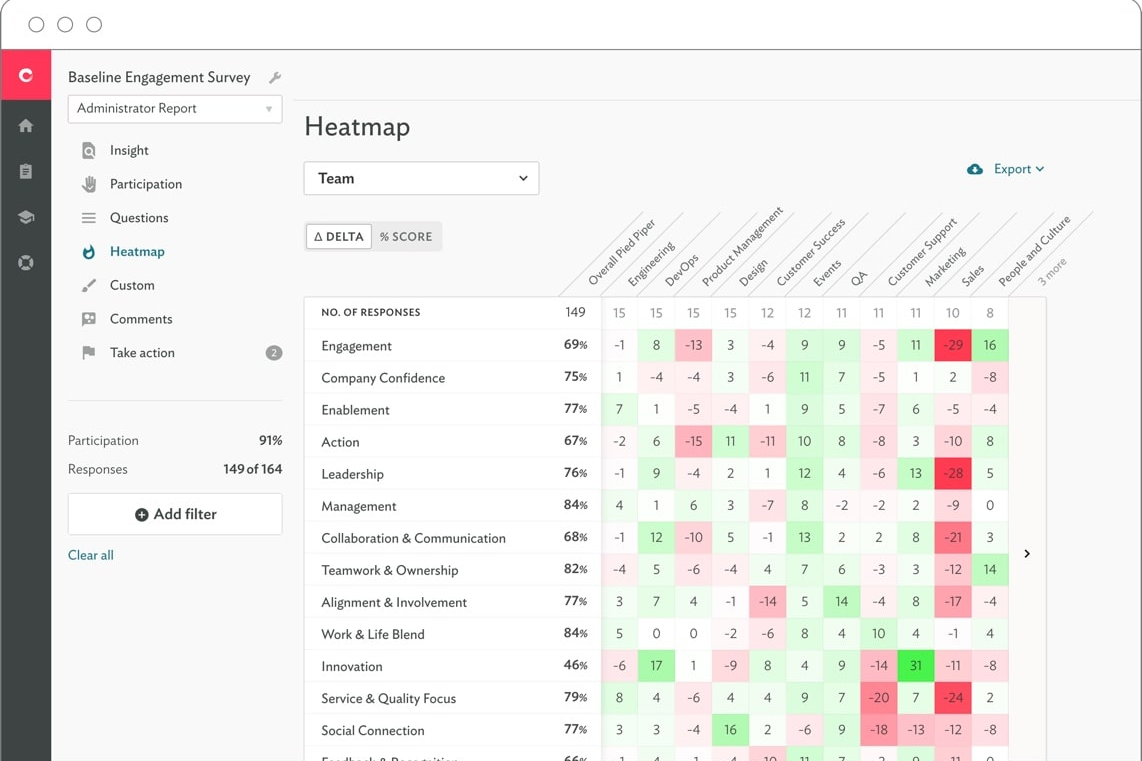
While it’s important to continually collect feedback and keep communication channels open, “the cadence of measurement is less important than the cadence of action,” Didier believes. One misconception the Culture Amp team often sees is companies who think they need to survey their employees constantly. This is where Didier often sees companies struggling-either trying to do too much at once, or losing steam after executing a survey and sharing out findings.Ĥ Steps for Taking Action to Make a Cultural Change For example, if your data indicates that statistically women in engineering organizations are more likely to leave the company, it doesn’t necessarily mean that one woman on a team is more likely to leave than one man is.
#CULTURE AMP SERIES HOW TO#
Computers can do advanced statistical analysis, but he isn’t convinced we always understand how to apply that data to individuals and real life scenarios. The ethics of data analysis is an area where Didier wants to dive deeper. Next, comes analyzing the data, but be warned-there are many pitfalls to avoid in this step. “That's the beginning of the conversation, not the end,” he says. Didier says this cycle, inspired by the process of design thinking, is at the core of any successful, sustainable change.Īt Culture Amp, an employee survey is step one. Then start over again by collecting more information on the action you took. To make lasting change happen, you have to understand what that information is telling you and make a plan of action.
#CULTURE AMP SERIES SERIES#
While people often describe the company’s offering as a “feedback platform,” Didier says “it's the loop that matters.”ĭidier joined us on the Creative Confidence Series to discuss Culture Amp’s approach to organizational change, steps for actioning insights, and how to keep a loop of feedback flowing to enable continual iteration.Ĭollect, Understand, Act Framework for ChangeĬollecting baseline information about a challenge is just the first step.

With venture capital backing and a rapidly expanding customer base, the company is differentiating itself by looking at the employee survey in a holistic, human-centered way-as part of a larger feedback loop. This cycle is so central to Culture Amp’s approach to organizational change that they modeled their logo on the enso.ĭidier founded Culture Amp, the world’s leading culture analytics platform, in 2009. Didier Elzinga, CEO and founder of Culture Amp, relates it to the cycle of continuous learning needed to improve your organization’s culture-it’s like asking a question and listening for an answer, over and over again. The Japanese process of enso, drawing a circle in one brushstroke, is a meditative act. Listen to more episodes of the Creative Confidence Podcast.

Didier Elzinga, CEO & Founder of culture analytics platform Culture Ampĭidier Elzinga, CEO and Founder of culture analytics platform Culture Amp, joined us on the Creative Confidence Series to talk about applying design thinking mindsets to culture and people operations, turning culture insights into actions, and making change happen from wherever you sit. “The cadence of measurement is less important than the cadence of action.”


 0 kommentar(er)
0 kommentar(er)
